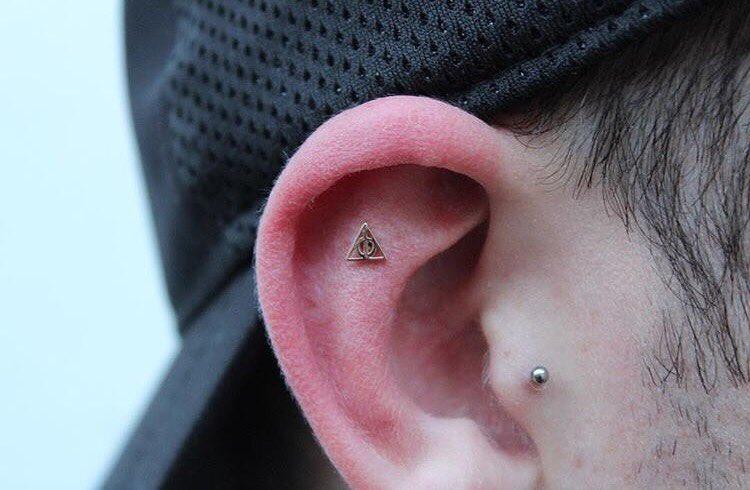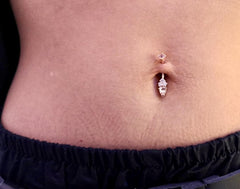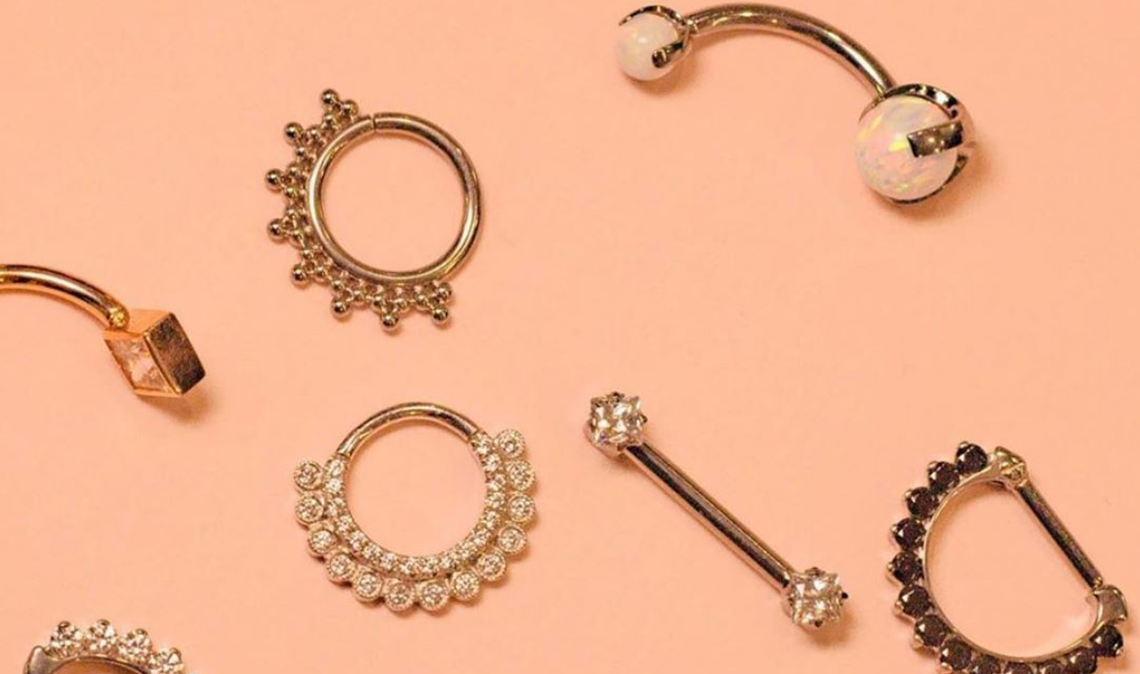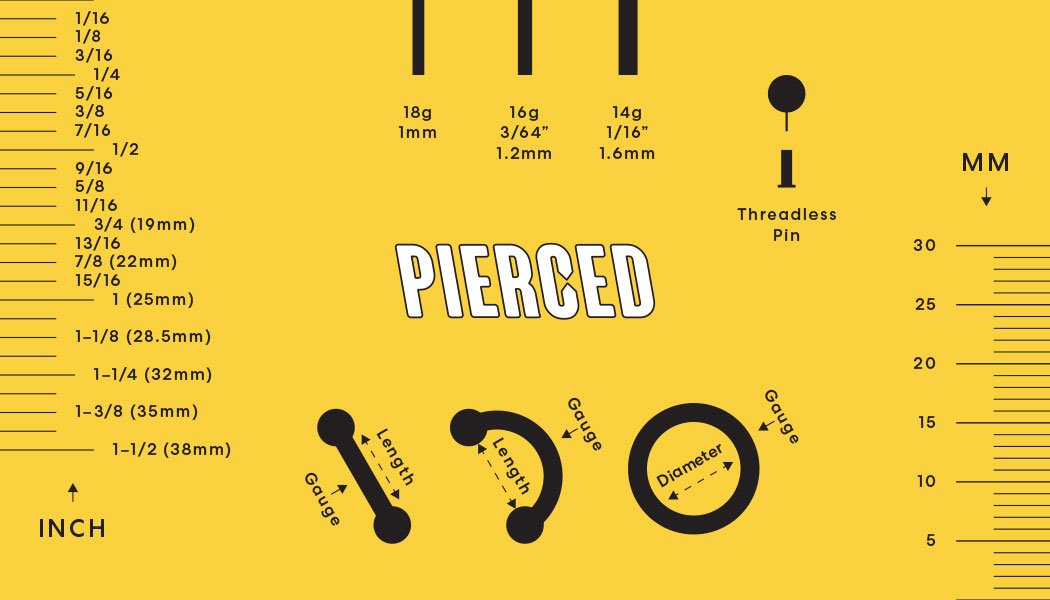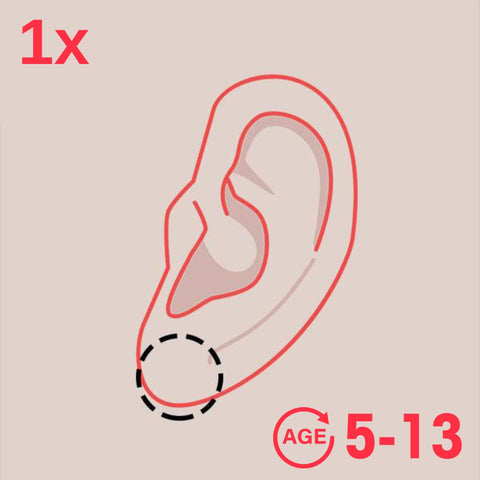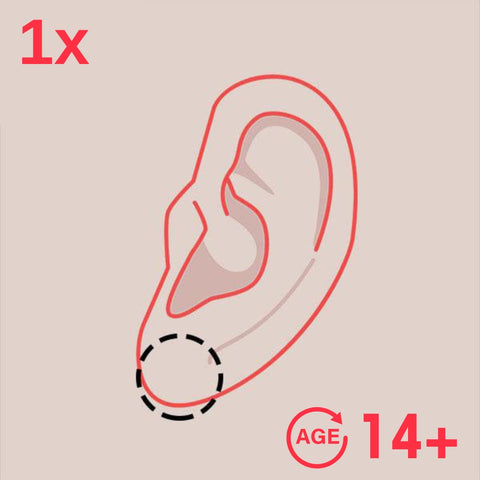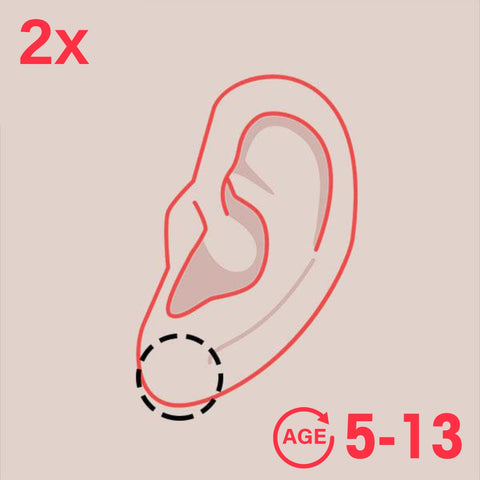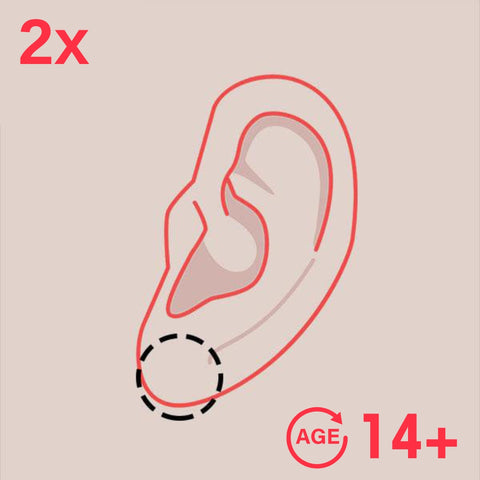Cartilage piercings have become a popular trend in the world of body art and self-expression. With a wide variety of jewelry options and placement choices, they offer a unique and personalized way to showcase your style. However, before embarking on your cartilage piercing journey, it's crucial to be well-informed about the process, aftercare, and potential risks. In this ultimate guide, we'll cover everything you need to know about cartilage piercings, ensuring you have a safe and successful piercing experience.
WHAT IS A CARTILAGE PIERCING?
Cartilage piercings involve perforating the cartilage in specific areas of the ear. Unlike traditional lobe piercings, which target the soft tissue of the earlobe, cartilage piercings puncture the harder cartilage tissue. Common cartilage piercing locations include the helix, tragus, conch, daith, and rook.
A cartilage piercing is done in two steps:
- Step one is the actual piercing with the needle
- Step two involves the placement of the desired jewelry
TYPES OF CARTILAGE PIERCINGS
There are several types of cartilage piercings that you can get:
TRAGUS PIERCING
The tragus piercing is in the part that is above your earlobe on the inside of your ear.
HELIX PIERCING
The helix piercing is the most common type of cartilage piercing and is a simple piercing on the outer the upper part of your ear.
INDUSTRIAL PIERCING
- This is similar to the helix piercing, except an
- has two or more holes that go through your cartilage that are connected by the same piece of jewelry.

What to Do Before Getting a Cartilage Piercing
Before walking into a studio, it is best to keep your hair up and away from your ears. It is also recommended that your ears are thoroughly cleaned before the piercing is performed, your piercer will clean your ears until suitable for piercing.
It is also important that you research the piercing studio beforehand. The last thing you want to do is end up with a unhappy piercing or issue. At Pierced, our team is highly experienced and dedicated to providing the best service and care. We’re here to answer any and all questions you may have beforehand, and to make you feel comfortable at every step of the process.
DOES GETTING A CARTILAGE PIERCING HURT?
If you happen to not be a fan of needles, then you’re actually in luck! Whether or not the initial piercing hurts, and to what extent, depends in large part on how high your pain tolerance is, but the initial piercing isn’t typically what hurts, and when it does it's over in an instant.
The best way to describe what a cartilage piercing feels like to imagine yourself getting unexpectedly pinched in the ear by a younger, annoying sibling. That’s pretty much what it feels like, which in retrospect, isn’t too bad at all.
Having said that, the actual act of getting it pierced isn’t usually the painful part; the pain factor (though mild) is more about the next couple of weeks.
Cartilage piercings take between 4-6 months to heal at a minimum. Initial swelling can subside in 2 weeks, although it's more common to last around 2-6 weeks.
So, if you’re nervous about needles, then the anticipation of the needle will hurt way more than when it’s being used. Other than that, your ear may feel hotter than usual accompanied by a slight discomfort when you clean it.
Cartilage piercings are, at most, slightly uncomfortable until the piercing is fully healed. In other words, they are not as painful as you might think they are!

How Long Does it Take a Cartilage Piercing to Heal?
The main time frame for healing is between 4-6 months. But, cartilage piercings can be deceiving in that, just because you can’t feel it anymore, doesn’t mean that the piercing is finished it’s healing process.
It takes about nine full months for a cartilage piercing to heal. In that time, after the initial two weeks of discomfort, you may feel crustiness behind your earring as well as a slight wet feeling. These symptoms are typical and nothing out of the ordinary when it comes to cartilage trying to heal. As long as the piercing is kept clean, any possible infection will be easily prevented.
Aftercare and Cleaning
Your original jewelry should stay in until you are ready to downsize, which for a standard helix piercing and most cartilage piercings, is 12 weeks. Removing the earring for even a day puts it at risk for closing up, so be sure that the piece of jewelry you choose is something you can live with for a little less than a year.
You will usually receive an ear cleaning product from the original piercer, but in the off chance that they don’t have any in stock, cleaning the piercing is generally done with a sterile saline soak like Neilmed Neilcleanse.
- Avoid Touching: Refrain from touching the piercing with dirty hands to prevent introducing bacteria and causing irritation.
- Be Gentle: Avoid sleeping on the piercing and be cautious when combing or brushing your hair to prevent accidentally pulling or snagging the jewelry.
- Avoid Swimming: Keep your piercing away from pools, hot tubs, and natural bodies of water until it has fully healed to avoid contamination.

Risks and Potential Complications
While cartilage piercings are generally safe, there are potential risks associated with the procedure. It's essential to be aware of these risks before getting a cartilage piercing:
- Infection: Poor aftercare, touching the piercing with unclean hands, or using contaminated jewelry can lead to infections.
- Keloids and Hypertrophic Scars: Some individuals may be prone to keloid or hypertrophic scar formation, resulting in raised and thickened scar tissue around the piercing.
- Migration or Rejection: In rare cases, the body may reject the jewelry, causing the piercing to migrate or completely push it out.
- Cartilage Damage: Excessive trauma or incorrect piercing techniques can damage the cartilage, leading to issues like cartilage necrosis or deformities.

HOW MUCH DO CARTILAGE PIERCINGS COST?
The average price of a cartilage piercing is about $40-$50, depending on the type of jewelry you choose. It is typically more expensive to get your piercing done by a professional because they are licensed and excellent at what they do. So although getting it done at a mall may save you money, the $30 you’ll save is not typically worth the risk in the long run.
Summary of Expert Tips for Cartilage Piercing Success
To ensure a successful and enjoyable cartilage piercing experience, consider these expert tips:
- Choose a Professional Piercer: Select a reputable and experienced piercer like Pierced to minimize the risk of complications and ensure proper hygiene.
- Avoid Low-Quality Jewelry: Opt for high-quality jewelry made from materials like titanium or surgical steel to reduce the chances of allergic reactions or infections.
- Follow Aftercare Instructions: Adhere strictly to the aftercare instructions provided by your piercer to promote optimal healing and minimize complications.
- Stay Patient: Cartilage piercings take time to heal, so avoid changing jewelry prematurely or subjecting the piercing to unnecessary trauma.
- Consult a Professional: If you experience persistent pain, redness, swelling, or any concerning symptoms, consult your piercer or a healthcare professional promptly.
READY TO GET YOUR OWN CARTILAGE PIERCING?
The right piercing studio can make all the difference in having a pleasant experience and a piercing that will be free from infection, perfectly placed and ready to show off to friends and family.
If you are considering getting your own cartilage piercing, don’t hesitate to reach out. Our team of talented piercing professionals would love to learn more about how they can help and will answer any questions you may have. Book an appointment with us.
Piercing Studios Near You
Mississauga
Square One Shopping Centre
100 City Centre Drive, Mississauga,
ON L5B 2C9
Phone
+1 (905) 232 -7226
Need an Experienced Piercer in Mississauga?
Working with an experienced piercer can make all the difference when it comes to your piercing experience. If you’re in the Mississauga, Ontario area and have any questions about ear piercing, body piercing or jewelry, give us a call or stop by our piercings studio today. We’d love to help walk you through what to expect and help you choose the right option.
